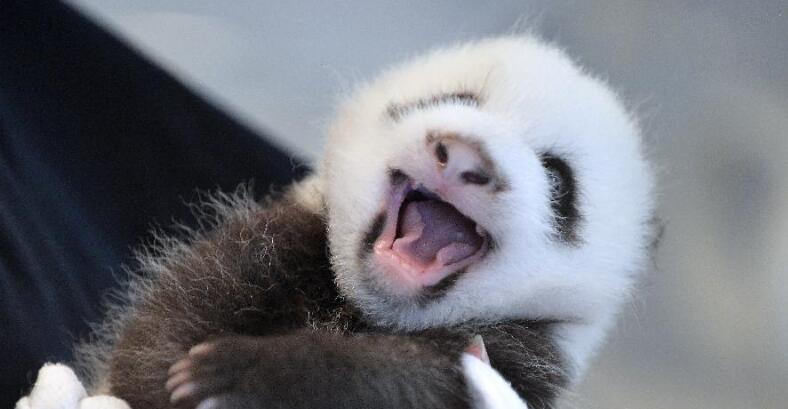Q: At this time is the giant panda population shrinking? Is it under the risk of extinction in this century?
A: The giant panda is really a strong species in terms of evolution. It survived the dreadful quaternary ice age while many species that lived during the same time-period have become extinct. This is why the giant panda is called a “living fossil”. Genetic research in recent years has proven that the wild giant panda population has maintained genetic diversity and has a strong evolutionary potential. Human behavior is the main threat to the giant panda population. Beginning in the 18th century the continuous increase in the human population has compressed the giant panda’s habitat and gradually worsened its quality. In the 1980s the giant panda population, was divided into 24 small populations, whose survival was threatened by the decline in population inheritance caused by a lack of gene exchange among the populations, inbreeding, gene drift and more. Since then, the Chinese government has paid significant attention and increased giant panda conservation efforts. Up to now, 64 nature reserves have been set up to restore giant panda habitats and carry out giant panda in-situ protection. Due to the initial success of captive breeding conservation work, there is no threat that the giant panda will go extinct at the end of this century. Still we should be aware that our activities like mining, road repairing, damming, overgrazing, bamboo shoots harvesting, hunting, traveling and wild herb foraging are harming the quality of giant panda habitats and threatening their survival. Giant panda conservation still has a long way to go.
Q: As an ancient species which once lived in the same age as the dinosaurs, what did giant pandas eat for food instead of bamboo? Was their physical shape much larger than it is today?
A: Let me first make a correction, the giant panda and dinosaur are not contemporaneous species. The giant panda is a mammal while the dinosaur is a reptile. Dinosaurs became extinct about 60 to 70 million years ago, after which mammals began to flourish.
About 20 to 30 million years ago, the primordial bear emerged and differentiated into a number of diverse species of bear-like animals. Fossil evidence shows that Ailurarctos the ancient giant panda appeared about 8 million years ago. Living in the warm and wet marshland, it was an omnivore the size of a small, fat dog. About 2 to 3 million years ago, Ailuropoda microta appeared. Its body size was much larger than the ancient giant panda, but only 4/5 of the modem giant panda’s. It was then that the feeding habits of the giant panda began to change from omnivorous to herbivorous. Ailuropoda melanoleuca baconi, whose body size was 1/9 to 1/8 larger than the modem giant panda, appeared 700 to 800 thousand years ago. This was the most prosperous period for giant pandas.
Ailuropoda melanoleuca, the modern giant panda appeared during the Holocene approximately 11.5 thousand years ago. Though its body size is slightly smaller, its physical structures like the jaw and teeth have become more suitable for breaking and chewing the hard bamboo. Giant pandas today eat a diet made up of 99% bamboo, with some supplementary food like meat, fruits and cereals.
Q: Are giant pandas herbivores?
A: The giant panda’s eating habits are unique. As most people know, bamboo is their main source of food, comprising 99% of the giant panda’s diet. However, the giant panda is not a true herbivore. In spite of thousands of years of evolution it has retained certain physiological features from its carnivorous ancestors. Giant pandas still have canine teeth, a short digestive tract that is typical of carnivores, and an underdeveloped caecum. These retained traits allow the pandas to occasionally scavenge the corpses of goats, tufted deer, black bears, takin and bamboo rats. They will also sometimes prey on domestic sheep in farmyards.






















































































